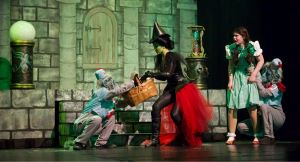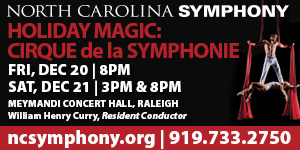The Western Piedmont Symphony opened its 42nd Masterworks Concert season with a concert at the J. E. Broyhill Civic Center with Music Director John Gordon Ross conducting. This season, each of the five Masterworks Concerts will have a different string quartet sitting in the principal string chairs, auditioning to become the quartet in residence. This concert welcomed the La Catrina String Quartet from Kent State University in Ohio.
The program opened with Leonore Overture Op. 72b, No. 3, by Ludwig van Beethoven (1770-1827). Beethoven wrote only one opera originally named “Leonore” but after several revisions was renamed “Fidelio.” He wrote three different overtures to “Leonore,” before finally settling on what is now known as “The Overture to Fidelio.” Leonore No. 3 is the best of the four, and the most frequently played. Opening with the orchestra playing a slow, descending scale in unison, the overture progresses to an allegro and ends with a triumphant presto. Despite some ensemble problems in the faster movements, the overall presentation was quite satisfying. Principal trumpeter, Mark Dulin, played the offstage trumpet calls with great facility and clarity.
I suspect, however, that the larger-than-usual audience did not travel to Lenoir to hear Beethoven’s overture, but to hear guest soloists, Lenoir native, oboist Joseph Robinson, and his wife, violinist Mary Kay Robinson.
Joseph Robinson graduated from Davidson College with a degree in English and economics. Following oboe studies with the legendary Marcel Tabuteau, he was appointed principal oboist of the Atlanta Symphony, and later served as principal oboist of the New York Philharmonic from 1978 to 2005. He now serves as Artist-in-Residence at Duke University. Violinist Mary Kay Robinson has been a member of the New Jersey Symphony orchestra since 1989, and is also a regular participant in numerous musical festivals throughout the country.
First, Mr. Robinson and the orchestra performed L’Horloge de Flore (The Flower Clock) by Jean Francaix (1912-1997). The Flower Clock is based on various flowers, each of which blooms at a different hour of the day. In this work there are seven sections each representing a different flower and hour, such as Day Jessamine, Cupid’s dart, Moonflower, etc. Every time I hear Mr. Robinson perform I marvel at his tone and technique. This performance did not disappoint, his tone was smooth as silk and unwavering in quality from the lowest to the highest notes. The orchestra proved a very good collaborator in this floral bouquet.
Following intermission, Mr. and Mrs. Robinson joined a reduced orchestra in a performance of Johann Sebastian Bach’s (1685-1750) Concerto in C minor for Violin and Oboe, S. 1060. Based on his Concerto for Two Harpsichords, the solo violin and oboe parts are almost literally the right hand parts of the two solo harpsichords. The performance was a marriage in music, with each soloist beautifully complementing the other; of picking up and passing the musical lines back and forth. The orchestra, once again, was an able partner with these two extraordinary soloists.












